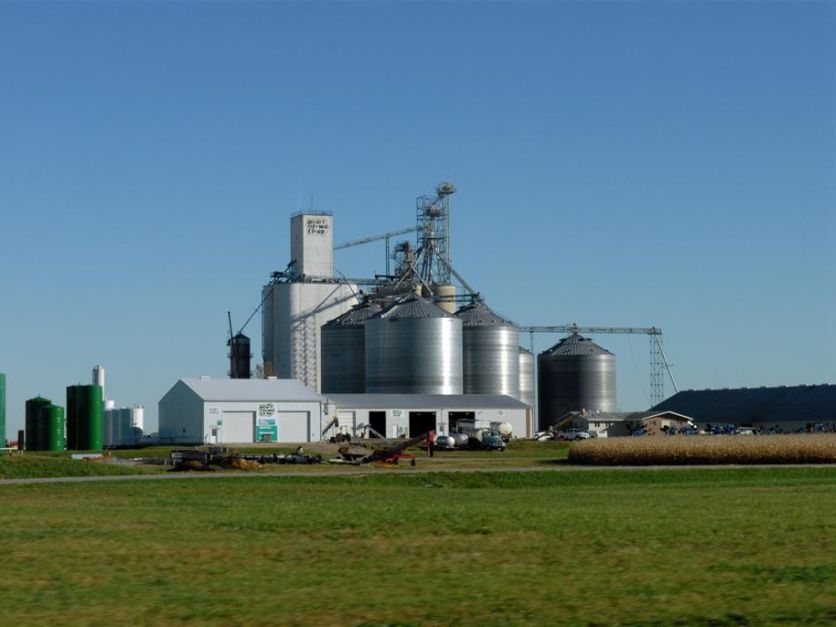U.S. corn and ethanol groups are celebrating a recent shipment to Mexico of gasoline with a 10% ethanol blend, but the fate of a more permanent acceptance of E10 in the country isn’t yet solidified as the government works to rewrite regulations to boost the legal blend rate.
Support is strong in Mexico for raising the blend cap from 5.8% to 10%, but the COVID-19 pandemic is slowing the regulatory process. Furthermore, government regulators are listening to domestic voices that want any new regulation to be tied to support for Mexican farmers and fuel makers, according to industry and government sources, some of whom asked not be named because of the sensitivity of the unfinished process.
What hangs in the balance is the potential demand for hundreds of millions of gallons of more corn-based ethanol from a trading partner just south of the border that is relatively easy to supply.
“The total Mexican gasoline supplies are at about 12.5 billion gallons,” Heidi Bringenberg, assistant director in Mexico for the U.S. Grains Council, said in a report on the group’s website. “Using E10 would equate to more than 1.2 billion gallons of ethanol demand. If Mexico was to even buy half of that from the United States and produce the other 50%, it would be a huge win-win for both countries.”
But for that to happen, Mexico’s Energy Regulatory Commission under the new administration of President Andrés Manuel López Obrador will have to follow through and finish what the previous administration could not under President Enrique Peña Nieto.
Peña Nieto’s Energy Regulatory Commission, which goes by the Spanish acronym CRE, approved boosting the amount of ethanol in gasoline from 5.8% to 10% in 2017, but it didn’t take long before the decision was tangled up in the legal system. That culminated in January, when Mexico’s Supreme Court partially sided with opponents.
The CRE, it ruled, did not have the authority to approve the regulation — technically referred to as NOM-019 — without collecting and considering public feedback, a process that’s integral to the U.S. system of rulemaking through the Federal Register. The CRE would have to go back and rewrite the regulation in six months.
But that was before COVID-19 hit Mexico, forcing widespread shutdowns and delays. More than 150,000 Mexicans have been infected with the virus and more than 17,000 have died, according to CDC data.
The original deadline for the CRE was July 15, but that was calculated on “working days,” of which there have been technically much fewer because of the pandemic. The CRE has been able to push that deadline back until mid-February 2021, by using a loose definition of working days, sources tell Agri-Pulse.
The pushback has given Obrador’s CRE more time, but it has also allowed the agency to begin considering new issues, such as how to tie the regulation to measures that would bolster domestic fuel makers and farmers.
“We’ve seen some nationalism pop up,” said Ed Hubbard, general counsel for the Renewable Fuels Association. “We’ve been concerned because new leadership at the CRE has been hinting that the Mexican domestic industry needs something.”

Ed Hubbard, RFA
The Obrador administration is considering issues such as increased investment in Mexican infrastructure — think ethanol terminals — as well as support for increasing the production of sugarcane-based ethanol, sources say. Sugar is produced in 15 Mexican states and the crop supports 450,000 jobs, according to USDA’s Foreign Agricultural Service. Diverting sugar into ethanol could potentially cause some consternation in the U.S., which sometimes relies heavily on the availability of cheap Mexican sugar.
But there’s still significant support in Mexico for simply allowing more ethanol into gasoline, and Pemex, the country’s state-owned oil company, could also benefit. While it is also a major producer of MTBE — a competing oxygenate that is banned in the U.S. and many other countries — Pemex is also investing in an expansion of blending ethanol into gasoline.
It’s just one of the reasons that some industry officials are optimistic that the CRE will finish its work on the regulation to boost Mexico’s top blending rate to 10% and not just at the scaled-scaled down level first approved by CRE in 2017. That version permitted E10 gasoline use only outside the three largest Mexican cities — Mexico City, Monterrey and Guadalajara.
At the time of that regulation, the CRE was demanding an analysis be done out of concern that E10 would increase ozone pollution in those three metropolitan areas. That analysis has now been done by Mexico’s Petroleum Institute (IMP), and a new government working group is meeting to consider lifting the three-city exception for the E10 regulation if the final version is approved. That working group has been stalled because of the pandemic, but it’s expected to begin meeting again soon, sources tell Agri-Pulse.
“The IMP concluded that no significantly different emission results were found between the use of MTBE and 10% volume ethanol in gasoline for the (Metropolitan Area of the Valley of Mexico),” according to a translation of the report.
It’s all part of the reason for optimism in the U.S. ethanol sector that celebrated the arrival last month of five railcars full of U.S. E10 gasoline that had been blended with 14,500 gallons of ethanol. The U.S. Grains Council said the shipment — the first to the Guadalajara region — was an example of its collaboration with the Mexican Association of Service Station Providers (AMPES).
“While these sales are only a small part of the overall ethanol sales to Mexico, this success demonstrates the effectiveness of the Council’s approach to provide technical education and support within the Mexican fuel industry,” USGC said in its statement on rail delivery. “Each is a step toward encouraging increased ethanol use through a mix of growing quantities of locally produced ethanol with U.S. ethanol filling in the missing demand.”

Ron Lamberty, ACE
Ron Lamberty, senior vice president for the American Coalition for Ethanol, said these early sales of E10 gasoline are what is needed for commerce to expand, spurring more companies to follow. “This is good news,” he said.
More good news came about a year ago when the Iowa Renewable Fuels Association invited representatives of about a dozen Mexican gasoline retailers to the state. The visiting Mexicans were bussed around the state for four days to visit retailers there in an effort to show them how successful E10 has been in the U.S.
“We wanted them to hear from other retailers,” said Monte Shaw, executive director for the Iowa Renewable Fuels Association. “It was great. At every stop, we couldn’t get them back on the bus.”
Some the visiting Mexican retailers relayed stories they’d heard from MTBE producers about the dangers of ethanol, but by the end of the Iowa trip a couple of the visitors put in purchase orders before they went home, Shaw said.
For more news, go to www.Agri-Pulse.com.


